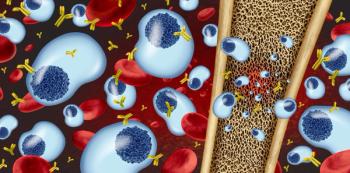
Research Finds Low-Energy Total Diet Replacement Does Not Increase Eating Disorder Symptoms in Individuals With Overweight or Obesity
Key Takeaways
- The ARIADNE trial assessed low-energy TDR programs' impact on eating disorder symptoms in high-risk individuals with obesity or type 2 diabetes.
- Participants followed a 12-week TDR program with behavioral support, showing noninferiority in eating disorder symptoms compared to usual care.
Low-energy total diet replacement programs show promise for individuals with obesity and type 2 diabetes, without increasing eating disorder risks.
In the randomized, controlled, noninferiority ARIADNE clinical trial (NCT05744232), researchers investigated whether low-energy total diet replacement (TDR) programs, which often raise concerns about triggering eating disorders due to their focus on weight and strict rules, could affect eating disorder symptoms. The findings, published by investigators in The Lancet, focused on individuals with overweight, obesity, or type 2 diabetes (T2D) who already identified as being at high risk for developing an eating disorder.1
Low-Energy TDR Program
The National Health Service (NHS) Path to Remission Program in England offers a TRD program to individuals living with obesity who are diagnosed with T2D. The program offers nutritionally complete meal replacement products, combined with behavioral support, which were assessed in clinical trials. In the low-energy TDR weight loss programs, individuals are asked to replace all foods with various formula products like soups, shakes, and bars to provide an intake of 800 to 1200 calories a day while supplying all nutrients needed. The total diet replacement phase can be followed for up to 12 weeks. In the behavioral support section of the program, individuals are instructed to meet with a trained counselor individually or in a group that offers support, encouragement, motivation, goal setting, and problem solving to assist the weight loss journey and help develop skills to maintain weight loss once the individuals are off the structured diet.1,2
ARIADNE Clinical Trial Methods and Results
In the ARIADNE clinical trial, researchers assessed a 12-week low-energy TDR program among individuals with overweight and obesity who resided in England. The individuals were assigned to either the TDR program, which included formula products and remote support, or usual diabetes care. The TDR group then underwent an 8-week food reintroduction and 4-week maintenance phase. The primary outcome was the change in eating disorder symptoms (EDE-Q global score) at 6 months, with safety assessed by new eating disorder diagnoses. A total of 101 individuals completed the full screening, and 28 of those individuals were randomly assigned to the intervention group and 28 individuals to the control group, for a total of 56 participants.1,3
The results demonstrated that the study participants, who had a mean body mass index (BMI) of 39.6 kg/m², showed significant impairment from eating disorder symptoms. They also reported moderate depressive symptoms and high diabetes-related distress at baseline, with similar characteristics between groups. By 6 months, 77% of individuals were adherent to their assigned groups, with 64% in the intervention group compared to 89% in the control group. Additionally, the between-group difference in the EDE-Q scores at 6 months was -0.8 points, demonstrating noninferiority for the intervention. Although the weight change was no longer different between groups at 12 months, the noninferiority and superiority in EDE-Q scores continued. Notably, no individuals were suspected of developing an eating disorder, and only 13 adverse events were reported, with cholecystectomy being the most serious.1
Although the findings reported that TDR programs do not harm individuals at high risk for eating disorders, the study was small and was designed to assess population-level effects. The study authors noted that further research on more diverse populations is needed to assess the behavioral support programs.1
REFERENCES
1. Tsompanaki E., Aveyard P., Park R., Jebb S., Koutoukidis D. An intensive weight loss programme with behavioural support for people with type 2 diabetes at risk of eating disorders in England (ARIADNE): a randomised, controlled, non-inferiority trial. The Lancet. July 2025. https://www.thelancet.com/journals/lanpsy/article/PIIS2215-0366(25)00126-9/fulltext
2. Nuffield Department of Primary Care Health Sciences. Total Diet Replacement Programs. University of Oxford. https://www.phc.ox.ac.uk/research/diet-plans.
3. ARIADNE: A Study of Weight Loss for Diabetes Treatment and Wellbeing. Clinicaltrials.gov: NCT05744232. Updated August 20, 2024. Accessed June 19, 2025. https://clinicaltrials.gov/study/NCT05744232
Newsletter
Stay informed on drug updates, treatment guidelines, and pharmacy practice trends—subscribe to Pharmacy Times for weekly clinical insights.



















































































































































































































